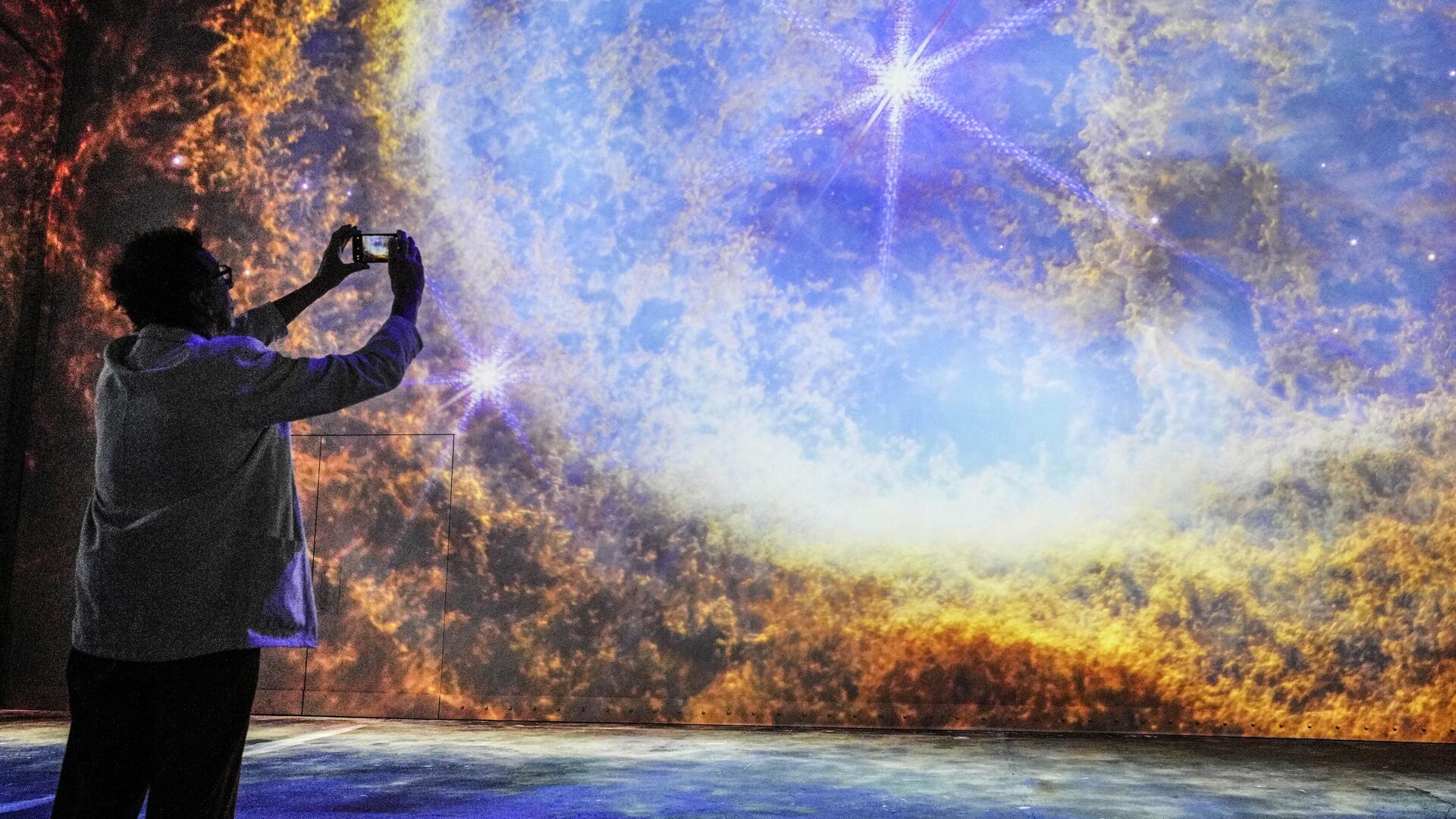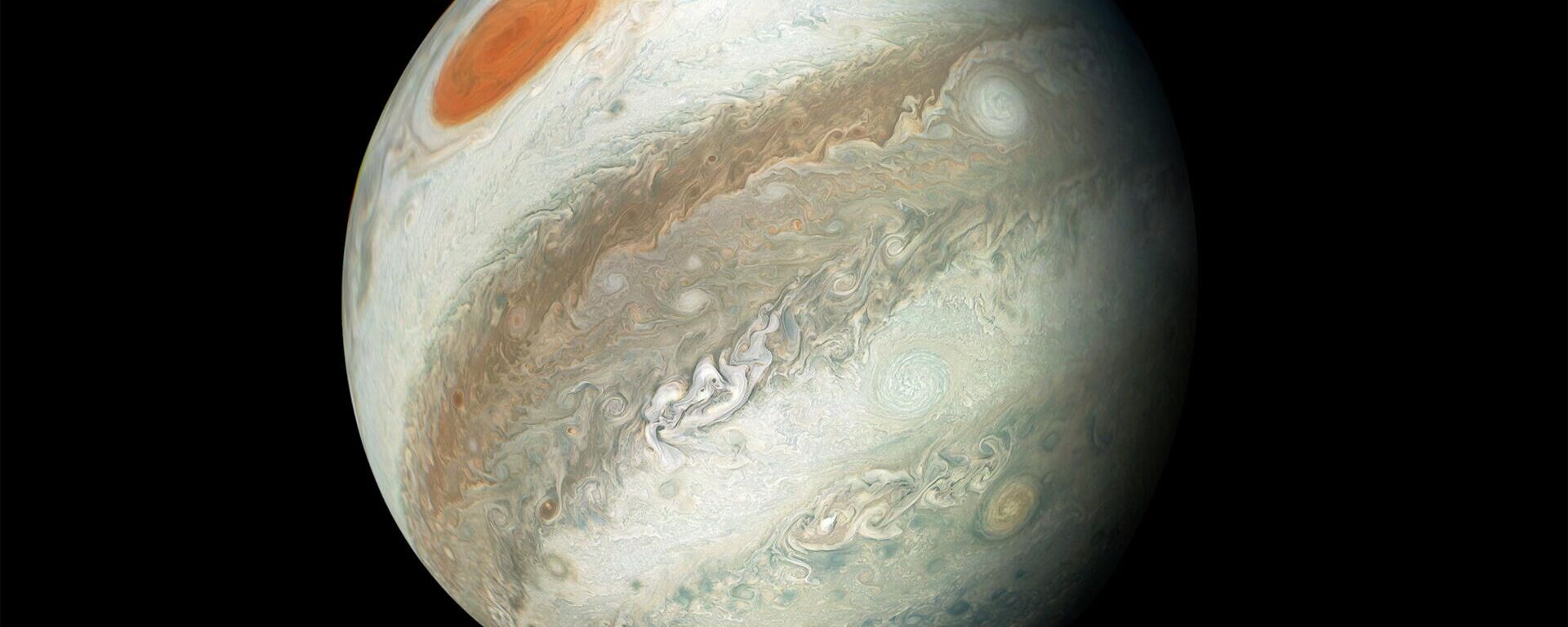https://en.sputniknews.africa/20231014/astronomers-capture-afterglow-from-massive-planetary-collision-for-first-time-1062800125.html
Astronomers Capture Afterglow From Massive Planetary Collision for First Time
Astronomers Capture Afterglow From Massive Planetary Collision for First Time
Sputnik Africa
A post on a social network, made by an amateur astronomer, led to the discovery of a collision that occurred between two massive planets within a remote... 14.10.2023, Sputnik Africa
2023-10-14T18:49+0200
2023-10-14T18:49+0200
2023-10-14T18:49+0200
science
earth
space
space exploration
research
sun
viral news
https://cdn1.img.sputniknews.africa/img/07e7/0a/0e/1062800396_0:73:3379:1974_1920x0_80_0_0_df30230471da626e53308c1133573d0f.jpg
The study, recently published in the scientific journal Nature, documents the observation of a collision between two ice giant exoplanets orbiting a star similar to the Sun, which generated a flash of light and enormous clouds of dust. According to the international team of researchers, the bright heat afterglow and the post-collision dust cloud temporarily dimmed the star as it crossed in front of it.The researchers began investigating the solar-like star after an amateur astronomer observed its light curve and detected a doubling in brightness in infrared wavelengths three years prior to its visible light fading.Thus, professional and amateur astronomers conducted an in-depth study of the star, monitoring its brightness fluctuations over the course of two years. The star ASASSN-21qj received its name from the telescope network that initially observed its fading at visible wavelengths.The study concluded that the most likely cause of the detected infrared glow was a collision between two ice giant exoplanets.The expanding debris cloud resulting from the impact proceeded to move in front of the star after three years, resulting in visible wavelength dimming of the star. The cloud of dust is predicted to smear out along the collision remnant's orbit over the next few years. The astronomers intend to observe this system closely to monitor any further developments.
https://en.sputniknews.africa/20230925/scientists-discover-biologically-essential-element-on-jupiters-moon-1062339860.html
earth
space
sun
Sputnik Africa
feedback@sputniknews.com
+74956456601
MIA „Rossiya Segodnya“
2023
News
en_EN
Sputnik Africa
feedback@sputniknews.com
+74956456601
MIA „Rossiya Segodnya“
Sputnik Africa
feedback@sputniknews.com
+74956456601
MIA „Rossiya Segodnya“
science, earth, space, space exploration, research, sun, viral news
science, earth, space, space exploration, research, sun, viral news
Astronomers Capture Afterglow From Massive Planetary Collision for First Time
A post on a social network, made by an amateur astronomer, led to the discovery of a collision that occurred between two massive planets within a remote planetary system situated at a distance of 1800 light years from Earth.
The study, recently
published in the scientific journal Nature, documents the observation of a collision between two ice giant exoplanets orbiting a star similar to the Sun, which generated a flash of light and enormous clouds of dust.
According to the international team of researchers, the bright heat afterglow and the post-collision dust cloud temporarily dimmed the star as it crossed in front of it.
The researchers began investigating the solar-like star after an amateur
astronomer observed its light curve and detected a doubling in brightness in infrared wavelengths three years prior to its visible light fading.
"To be honest, this observation was a complete surprise to me. When we originally shared the visible light curve of this star with other astronomers, we started watching it with a network of other telescopes," said Matthew Kenworthy, co-lead author of the study.
Thus, professional and amateur astronomers conducted an in-depth study of the star, monitoring its brightness fluctuations over the course of two years. The star ASASSN-21qj received its name from the telescope network that initially observed its fading at visible wavelengths.
The study concluded that the most likely cause of the detected infrared glow was a collision between two ice giant exoplanets.
"Our calculations and computer models indicate the temperature and size of the glowing material, as well as the amount of time the glow has lasted, is consistent with the collision of two ice giant exoplanets," said Simon Lock, co-lead author and research fellow in Earth Sciences at the University of Bristol.
The expanding debris cloud resulting from the impact proceeded to move in front of the star after three years, resulting in visible wavelength dimming of the star. The cloud of dust is predicted to smear out along the collision remnant's
orbit over the next few years. The astronomers intend to observe this system closely to monitor any further developments.


